1. Overview
Theda Bara, born Theodosia Burr Goodman (July 29, 1885 - April 7, 1955), was a prominent American silent film and stage actress. She rose to fame as one of the most popular actresses of her era and is widely recognized as one of cinema's earliest sex symbols. Her signature roles as a femme fatale earned her the enduring nickname "The Vamp," a term derived from "vampire" but referring to a seductive and alluring woman. Bara's portrayal of these exotic and sexually dominant characters significantly influenced early Hollywood's evolving representation of female sexuality and independence, though she often sought to avoid typecasting. She starred in over 40 films between 1914 and 1926, primarily for Fox Studios, most of which were tragically lost in the 1937 Fox vault fire. After her marriage to director Charles Brabin in 1921, she retired from acting in 1926, never appearing in a sound film.
2. Early Life and Background
Theda Bara's early life laid the foundation for her later transformation into a mysterious screen siren.
2.1. Birth and Family
Theda Bara was born Theodosia Burr Goodman on July 29, 1885, in Cincinnati, Ohio. She was named after Theodosia Burr Alston, the daughter of U.S. Vice President Aaron Burr. Her father, Bernard Goodman (1853-1936), was a prosperous Jewish tailor who had immigrated from Poland. Her mother, Pauline Louise Françoise de Coppett (1861-1957), was born in Switzerland. Bernard and Pauline married in 1882. Theda had two younger siblings: Marque (1888-1954) and Esther (1897-1965), who was known by the nickname "Lori." Both Marque and Lori briefly pursued careers in the movie business; Marque as a director and Lori as a screenwriter after an unsuccessful acting attempt. In 1890, the Goodman family moved to Avondale, a Cincinnati suburb known for its substantial Jewish community.
2.2. Education and Early Activities
Bara attended Walnut Hills High School and graduated in 1903. She then studied at the University of Cincinnati for two years. Following her university education, she primarily engaged in local theater productions. In 1908, she moved to New York City and made her Broadway debut in the play The Devil in the same year. For several years, she toured with various theater companies before seeking opportunities in film.
3. Career
Theda Bara's career was marked by a meteoric rise to fame, defined by her provocative "vamp" persona, and a subsequent decline following her departure from Fox Studios.
3.1. Film Debut and Early Career
Most of Bara's early films were produced on the East Coast of the United States, where the film industry was then centered, primarily at Fox Studios in Fort Lee, New Jersey. During this period, she resided with her family in New York City. She made her film debut in 1914, initially appearing as an extra. The burgeoning importance of Hollywood as the epicenter of the American film industry necessitated her relocation to Los Angeles for the filming of the epic Cleopatra (1917), which became one of her most significant successes. Although no complete prints of Cleopatra are known to exist today, numerous photographs of Bara in her elaborate Cleopatra costumes have survived.
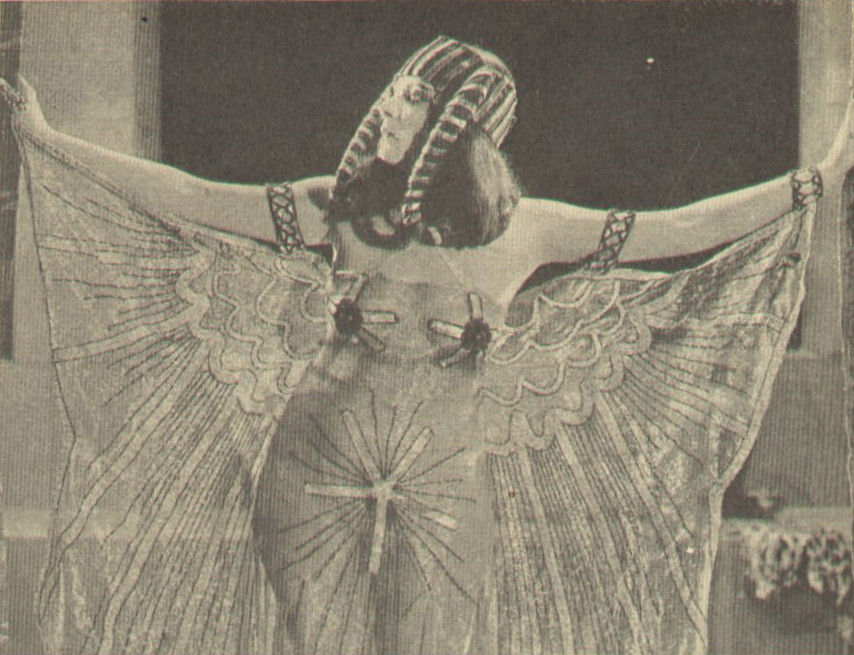
Her breakthrough came with A Fool There Was (1915), where she played a seductive woman who ruins men, catapulting her to overnight stardom. Her success at nearly 30 years old was unusual in a Hollywood where younger actresses often took leading roles, and her popularity made Fox one of the most successful film studios.
3.2. 'Vamp' Role and Fame
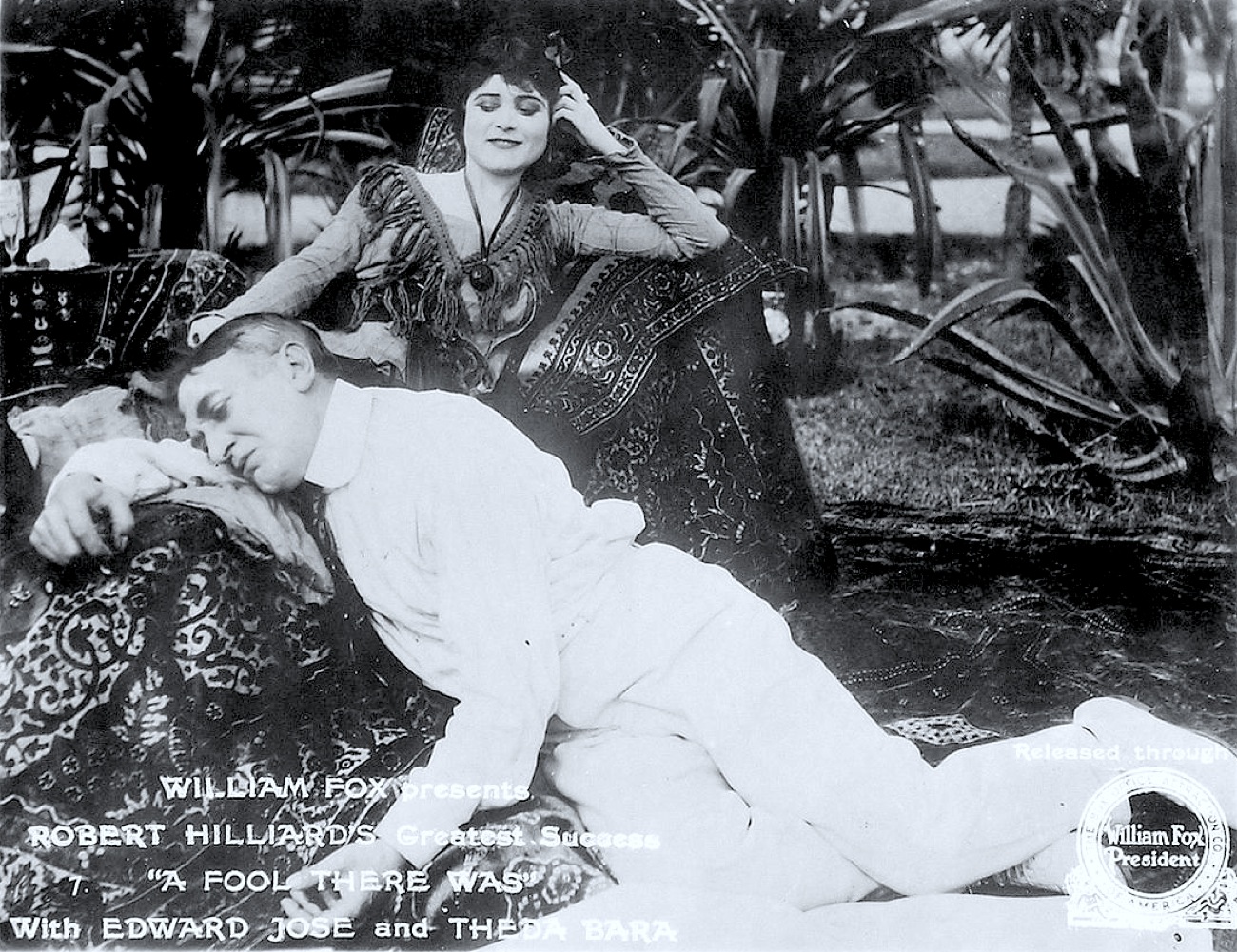
Theda Bara's iconic "vamp" persona was central to her fame and solidified her status as a major star and early sex symbol. The nickname "The Vamp" was a shortened form of "vampire," referring not to the undead creatures of horror films, but to a seductive and manipulative woman. This term originated from Rudyard Kipling's 1897 poem "The Vampire," which was inspired by Philip Burne-Jones's 1896 painting "The Vampire," depicting a woman mounting an unconscious man. Bara's roles often emphasized exoticism and sexual domination, reflecting and, in some ways, challenging contemporary societal views on female sexuality. She was known for her portrayal of calculating, cold-hearted women, which critics sometimes deemed morally instructive for men. When questioned about these roles, Bara famously retorted, "I will continue doing vampires as long as people sin." Despite her success in these roles, Bara often expressed a desire to avoid typecasting, attempting to play more wholesome heroines in films such as Under Two Flags and Her Double Life, and even appearing as Juliet in a version of Shakespeare's Romeo and Juliet. However, her immense success as an exotic, "wanton" woman ultimately limited her ability to develop a more versatile acting career.
3.3. Major Works and Activities
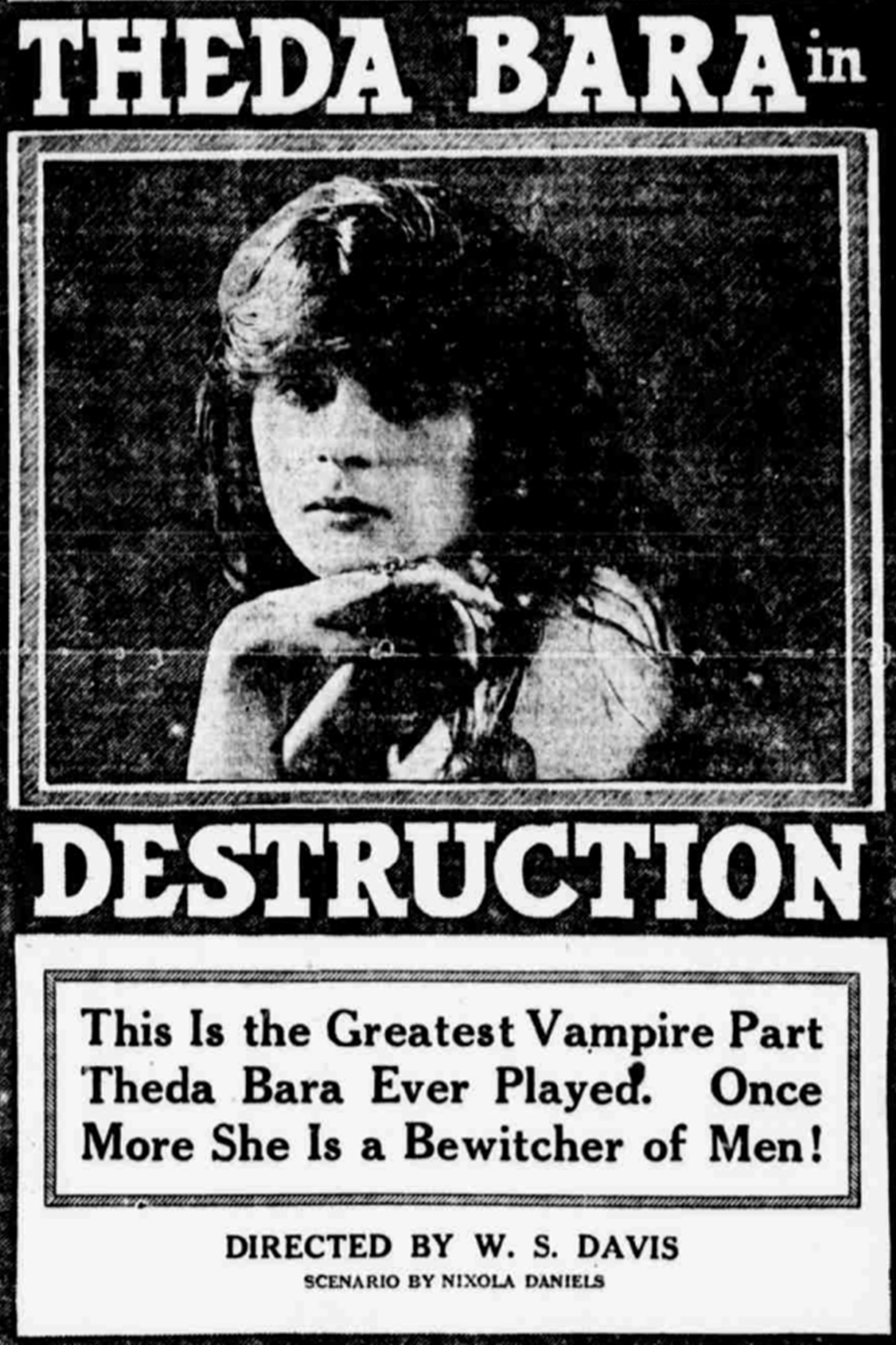
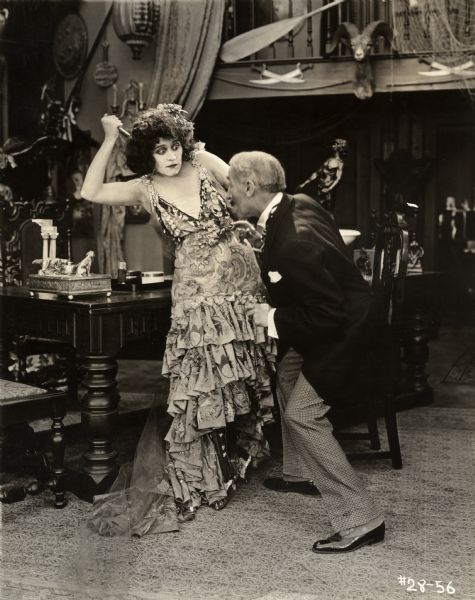
Theda Bara's filmography includes over 40 films, though many are now lost. Her most significant roles were often those that cemented her "vamp" image. Key films include A Fool There Was (1915), which launched her into stardom, and Cleopatra (1917), an epic that became one of her biggest hits, despite only about one minute of footage surviving today.
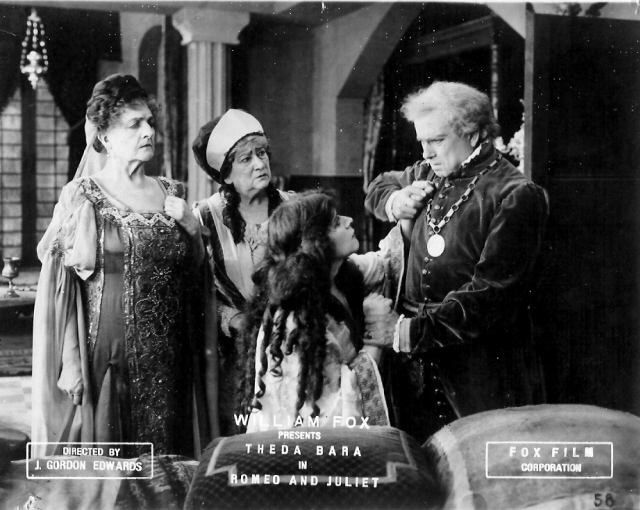
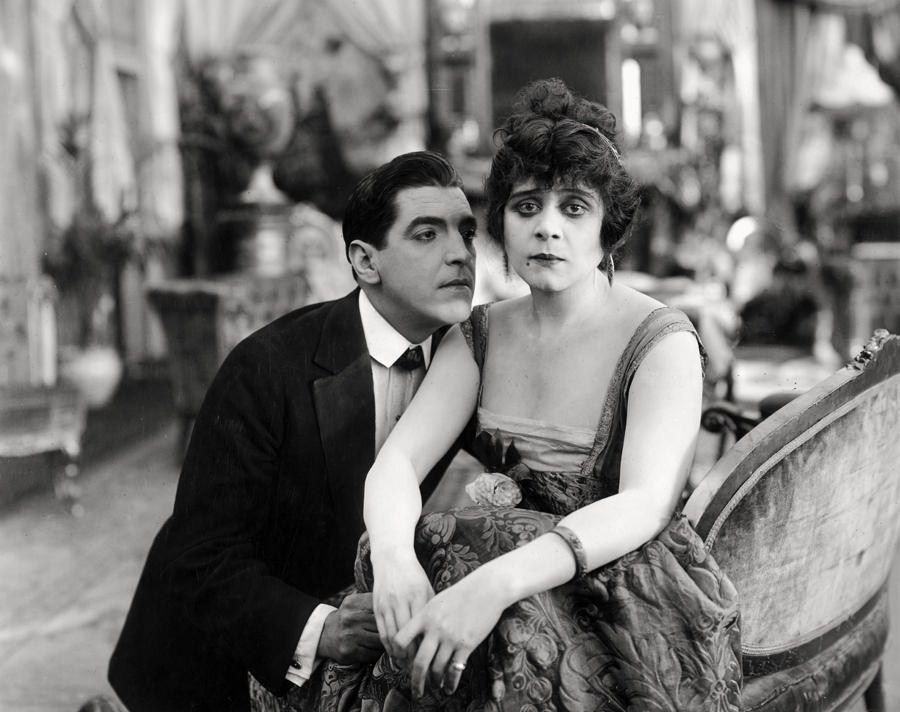
Other notable films where she attempted to diversify her roles include Under Two Flags and Her Double Life, where she played more virtuous characters, and her appearance as Juliet in a 1916 adaptation of Romeo and Juliet. She took her craft seriously, but her public image as the exotic "vamp" overshadowed her efforts to broaden her acting range.
3.4. Image and Persona
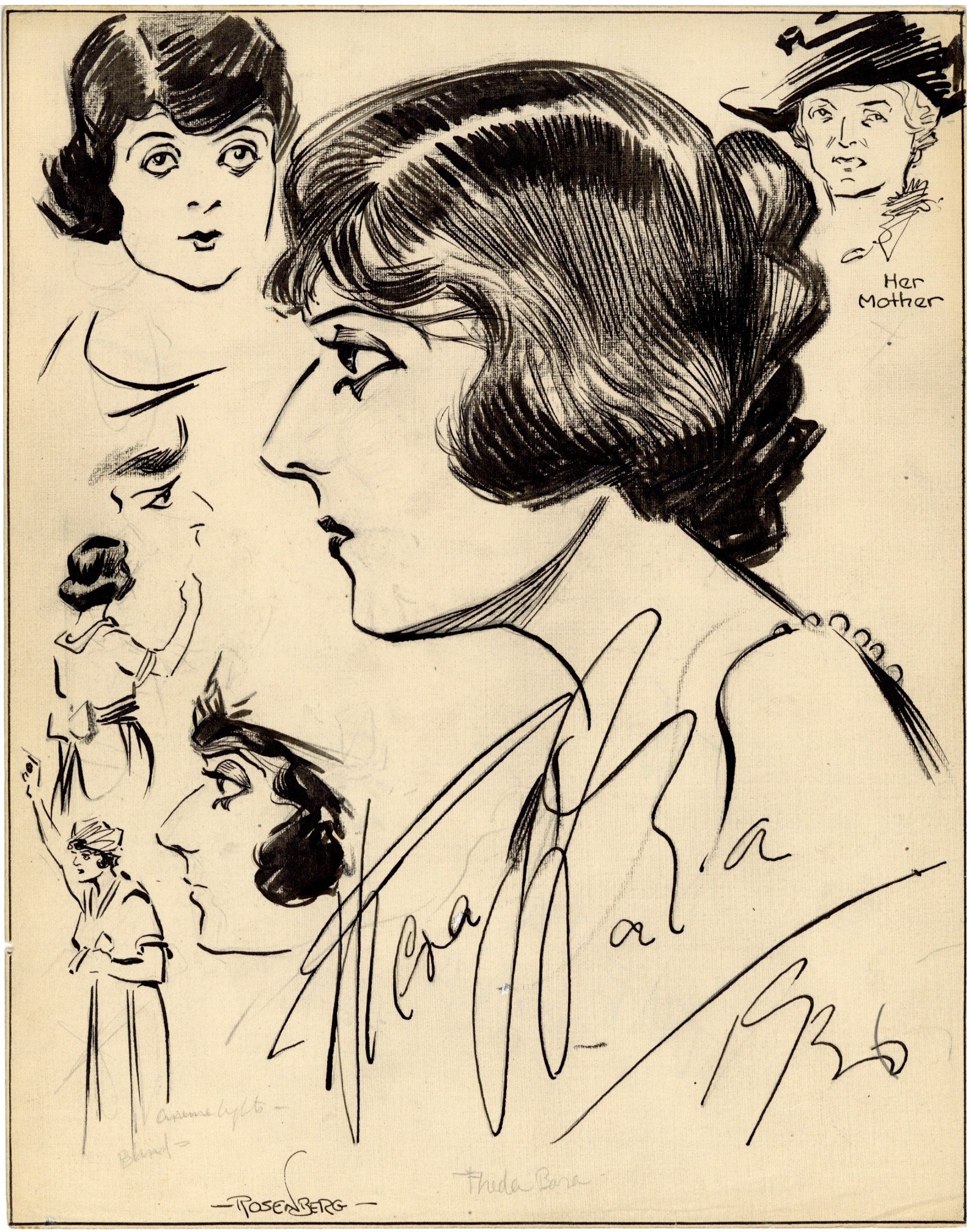
Theda Bara's public image was largely a meticulously constructed persona orchestrated by Fox Studios' publicity department, which some film historians credit as the birth of modern studio publicity. To enhance her exotic appeal, her press agents falsely promoted the Ohio native as "the daughter of an Arab sheik and a French woman, born in the Sahara desert." Other variations claimed her parents were a French artist and an Egyptian lover, or that she was a supernatural priestess born at the foot of the pyramids. They asserted she had spent her early years under the shadow of the Sphinx before moving to France to become a stage actress. In reality, Bara had never been to Egypt, and her time in France amounted to only a few months. She was dubbed the "Snake of the Nile" and encouraged to discuss mysticism and the occult in interviews to further this mysterious image.
The origin of her stage name, Theda Bara, is debated. While Fox Studio publicists claimed it was an anagram of "Arab death" to boost her exotic allure, The Guinness Book of Movie Facts and Feats suggests it came from director Frank Powell, who learned that Theda was a childhood nickname and that she had a relative named Baranger. Another account states that "Theda" was a shortened form of her birth name, Theodosia, and "Bara" was her maternal grandmother's name. In 1917, the Goodman family legally changed their surname to Bara.
Bara was well-known for wearing very revealing costumes in her films, a practice that became forbidden in Hollywood after the implementation of the Production Code (also known as the Hays Code) in 1930, which was more strictly enforced from 1934. This public image of a provocative and mysterious woman stood in stark contrast to her private life. A 2016 book by Joan Craig and Beverly F. Stout, Theda Bara, My Mentor: Under the Wing of Hollywood's First Femme Fatale, chronicles personal accounts that reveal a significant dichotomy between her on-screen persona and her real-life character. The book describes Bara as a kind-hearted woman who enjoyed reading and visiting museums, was an excellent cook, and whose home was a favored gathering place for film industry figures. It also details her surprising reaction to critical responses to her screen portrayals and her skill in designing and creating many of her own film costumes and wigs, including the striking outfits worn in Cleopatra.
3.5. Later Career and Retirement
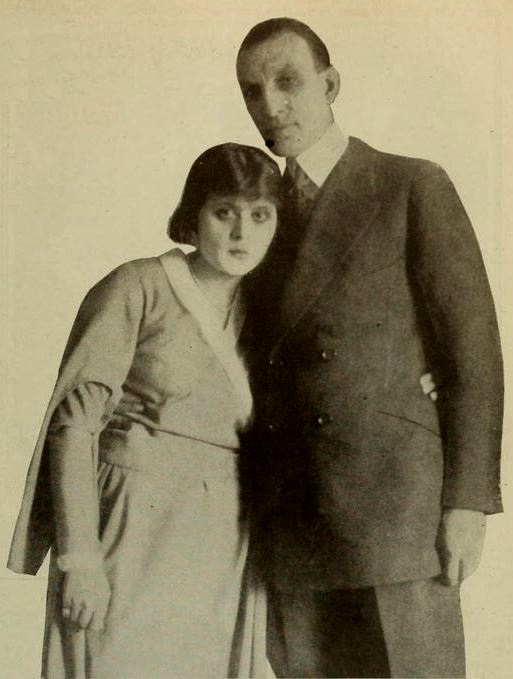
Theda Bara was Fox Studio's biggest star between 1915 and 1919. However, growing tired of being typecast as a "vamp," she allowed her five-year contract with the company to expire. Her final film for Fox was The Lure of Ambition (1919). In 1920, she briefly returned to the stage, appearing on Broadway in The Blue Flame. While her fame drew large audiences, her acting in the play was severely criticized.
Without the extensive promotional support of Fox Studios, Bara's film career suffered significantly. She did not make another film until The Unchastened Woman (1925) for Chadwick Pictures. She retired from acting after making only one more film, the short comedy Madame Mystery (1926), directed by Stan Laurel for Hal Roach, in which she parodied her famous vamp image. Bara never appeared in any sound films. At the peak of her career, she earned 4.00 K USD per week.
Despite her retirement from film in 1926, Bara made a few public appearances. In 1936, she appeared on Lux Radio Theatre during a broadcast of The Thin Man with William Powell and Myrna Loy. Although she did not perform in the play, she announced plans for a movie comeback, which ultimately never materialized. She made another radio appearance in 1939 as a guest on Texaco Star Theatre. In 1949, producer Buddy DeSylva and Columbia Pictures expressed interest in creating a film about Bara's life, with Betty Hutton slated to star, but this project also did not come to fruition. Bara, however, had no desire to return to Hollywood after her retirement.
4. Personal Life
Theda Bara's personal life was notably different from her public persona, characterized by a stable marriage and a quiet domestic existence.
4.1. Marriage
Theda Bara married British-born American film director Charles Brabin in 1921. They honeymooned at The Pines Hotel in Digby, Nova Scotia, Canada. Later, they purchased a 988 acre (400 ha) (990 acre (990 acre)) property down the coast from Digby at Harbourville, Nova Scotia, overlooking the Bay of Fundy, where they built a summer home they named Baranook. The couple had no children. Bara also resided in a villa-style home in Cincinnati, which later served as the "honors villa" at Xavier University. This home was demolished starting in July 2011.
A 2016 book by Joan Craig and Beverly F. Stout provides many personal, first-hand accounts of Bara's life with Charles Brabin, revealing a significant contrast between her on-screen image and her private life. The authors, who befriended Bara and Brabin when Craig was a child, describe Bara as a kind and gentle woman who enjoyed reading and visiting museums. She was also a skilled cook, and her home was a popular gathering place for figures from the film industry, including Marion Davies, Clark Gable, and Victor Fleming. The book details how Bara, learning pattern-making from her mother and father, designed and created most of the striking costumes and gowns she wore in her films, including those for Cleopatra.
5. Death
Theda Bara died on April 7, 1955, at the age of 69, after a prolonged stay at California Lutheran Hospital in Los Angeles. The cause of her death was stomach cancer. She was survived by her husband, Charles Brabin, her mother, Pauline, and her younger sister, Lori. Bara was interred as Theda Bara Brabin at Forest Lawn Memorial Park Cemetery in Glendale, California. Her will stipulated a bequest of 100.00 K USD to her sister Lori, 8.00 K USD to her husband Charles, and 1.00 K USD to her sister-in-law.
6. Legacy and Evaluation
Theda Bara's enduring impact on the film industry and popular culture is significant, despite the loss of most of her work.
6.1. Impact on the Film Industry
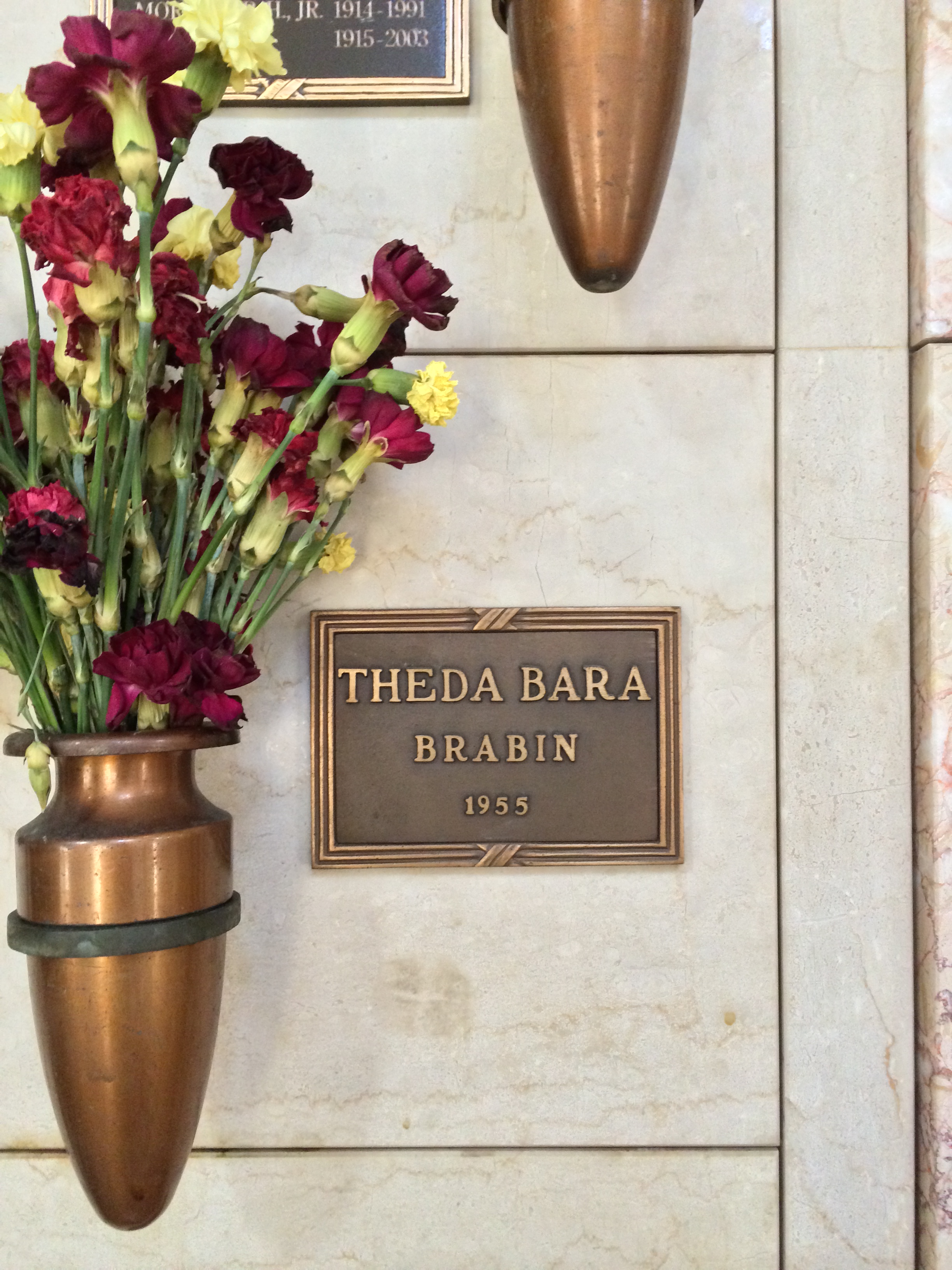
Theda Bara is frequently cited as the first true sex symbol of the film era. Her pioneering role in defining the "vamp" archetype profoundly influenced the portrayal of women in early cinema and the development of studio publicity departments.
Tragically, a 1937 Fox vault fire in New Jersey destroyed the majority of Fox Studios' silent film negatives and prints, including most of Bara's work. Out of more than 40 films she made between 1914 and 1926, complete prints of only six are known to still exist: The Stain (1914), A Fool There Was (1915), East Lynne (1916), The Unchastened Woman (1925), and two short comedies for Hal Roach (Madame Mystery and 45 Minutes from Hollywood).
In addition to these, fragments of a few other films remain. Less than a minute of footage from Cleopatra (1917) survives, along with a clip believed to be from The Soul of Buddha, and several other unidentified clips featured in the 2001 documentary Theda Bara et William Fox. Most of these fragments can be seen in the 2006 documentary The Woman with the Hungry Eyes. TimeLine Films of Culver City also produced a biography film titled Theda Bara: The Woman with the Hungry Eyes. In 2021, small fragments from Salomé were discovered by an intern at Filmoteca Española, totaling about two minutes of footage. Additional behind-the-scenes footage of Bara has also been found, though its specific film source, possibly The Lure of Ambition, remains unconfirmed.
Filmmaker and film historian Phillip Dye undertook a project to reconstruct the lost Cleopatra on video. Titled Lost Cleopatra, this full-length feature was created by editing together montages of production still photographs combined with the surviving film clip. The script for this reconstruction was based on the original scenario, with modifications informed by research into censorship reports, film reviews, and synopses from period magazines. Dye screened Lost Cleopatra at the Hollywood Heritage Museum in February 2017.
6.2. Cultural Impact and Commemoration
Theda Bara's influence extends beyond her film career into various aspects of popular culture. For her contributions to the film industry, she was honored with a Hollywood Walk of Fame motion picture star in 1960, located at 6307 Hollywood Boulevard. She is also regarded as the first glamour star, and her legacy as a sex symbol was later continued by figures such as Pola Negri, Gloria Swanson, and in the sound film era, by Marilyn Monroe and Jayne Mansfield.
Her image has been commemorated in several ways:
- In 1994, she was featured on a U.S. postage stamp designed by caricaturist Al Hirschfeld.
- In May 2006, the Fort Lee Film Commission dedicated Main Street and Linwood Avenue in Fort Lee, New Jersey, as "Theda Bara Way" to honor her, as many of her films were made at the Fox Studio located at that intersection.
- The Chicago International Film Festival's logo features a stark, black and white close-up of composite eyes, formed by combining the eyes of Theda Bara, Pola Negri, and Mae Murray, set as repeated frames in a strip of film.
- The logo for the underground newspaper International Times is a black-and-white image of Theda Bara. The founders initially intended to use an image of 1920s "It girl" Clara Bow, but Bara's image was used by accident and remained.
- Her name appears in the 1921 Bert Kalmar/Harry Ruby song "Rebecca Came Back from Mecca" and their 1922 song "Sheik From Avenue B," sung by Fanny Brice.
- Bara has been a subject in several fictional works, including the novels In Theda Bara's Tent by Diana Altman, The Director's Cut: A Theda Bara Mystery by Christopher DiGrazia, and the play Theda Bara and the Frontier Rabbi by Bob Johnston. She also appears as a character in Adrienne Barbeau's books Vampyres of Hollywood and Love Bites, and in Clive Barker's Coldheart Canyon: A Hollywood Ghost Story.
- In the 2016 The Lumineers album Cleopatra, a photo of Bara as Cleopatra serves as the album cover.
- She is referenced in television series such as The Lucy Show (Season 2, Episode 1), where a character quips, "She's gone native with Theda Bara," and Downton Abbey (Season 2, Episode 7), where a newly designed bathroom is described as "like something out of a film with Theda Bara."
- In the Kerry Greenwood Phryne Fisher mystery novel Queen of the Flowers, a reference is made to "a straight answer from the last Theda Bara movie."
- Bara is referenced in films like The Aviator (2004), and extensively in the X film series. In the 2022 film Pearl, the titular character names her alligator Theda. In the 2024 film MaXXXine, the titular character is seen extinguishing a cigarette on Theda Bara's Hollywood Walk of Fame star.
- In 2024, the play On Set with Theda Bara, written by Joey Merlo and directed by Jack Serio, was performed by David Greenspan at The Brick Theater in New York, further cementing her enduring presence in the arts.
7. Filmography
Theda Bara appeared in over 40 films during her career, though most are now considered lost.
| Year | Film | Role | Notes |
|---|---|---|---|
| 1914 | The Stain | Gang moll | Credited as Theodosia Goodman |
| 1915 | A Fool There Was | The Vampire | |
| The Kreutzer Sonata | Celia Friedlander | Lost film | |
| The Clemenceau Case | Iza | Lost film | |
| The Devil's Daughter | Gioconda Dianti | Lost film | |
| Lady Audley's Secret | Helen Talboys | Lost film | |
| The Two Orphans | Henriette | Lost film | |
| Sin | Rosa | Lost film | |
| Carmen | Carmen | Lost film | |
| The Galley Slave | Francesca Brabaut | Lost film | |
| Destruction | Fernade | Lost film | |
| 1916 | The Serpent | Vania Lazar | Lost film |
| Gold and the Woman | Theresa Decordova | Lost film | |
| The Eternal Sapho | Laura Bruffins | Lost film | |
| East Lynne | Lady Isabel Carlisle | ||
| Under Two Flags | Cigarette | Lost film | |
| Her Double Life | Mary Doone | Lost film | |
| Romeo and Juliet | Juliet | Lost film | |
| The Vixen | Elsie Drummond | Lost film | |
| 1917 | The Darling of Paris | Esmeralda | Lost film |
| The Tiger Woman | Princess Petrovitch | Lost film | |
| Her Greatest Love | Hazel | Lost film | |
| Heart and Soul | Jess | Lost film | |
| Camille | Marguerite Gauthier | Lost film | |
| Cleopatra | Cleopatra | Approximately 1 minute exists | |
| The Rose of Blood | Lisza Tapenka | Lost film | |
| Madame Du Barry | Jeanne Vaubernier | Lost film | |
| 1918 | The Forbidden Path | Mary Lynde | Lost film |
| The Soul of Buddha | Priestess | Story, Lost film | |
| Under the Yoke | Maria Valverda | Lost film | |
| Salomé | Salome | About 2 minutes survive; Lost | |
| When a Woman Sins | Lilian Marchard / Poppea | Lost film | |
| The She-Devil | Lorette | Lost film | |
| 1919 | The Light | Blanchette Dumond, aka Madame Lefresne | Lost film |
| When Men Desire | Marie Lohr | Lost film | |
| The Siren's Song | Marie Bernais | Lost film | |
| A Woman There Was | Princess Zara | Lost film | |
| Kathleen Mavourneen | Kathleen Cavanagh | Lost film | |
| La Belle Russe | Fleurett Sackton/La Belle Russe | Lost film | |
| The Lure of Ambition | Olga Dolan | Lost film; 82-second outtake does exist | |
| 1925 | The Unchastened Woman | Caroline Knollys | |
| 1926 | Madame Mystery | Madame Mysterieux | Short film |
| 45 Minutes from Hollywood | Herself | Short film |
8. External Links
- [http://digitalgallery.nypl.org/nypldigital/dgkeysearchresult.cfm?parent_id=141370&word= Theda Bara] photo gallery NY Public Library collection
- [https://www.jaxhistory.org/portfolio-items/silent-movies-capital/ movie theater marquee in Jacksonville, FL: She Loved too Late, starring Theda Bara]
- [http://www.oldmagazinearticles.com/article-summary/silent_film_actress_theda_bara_article# The 1917 review of Tiger Woman starring Theda Bara] from The Atlanta Georgian
- [http://www.oldmagazinearticles.com/article.php?Article_Summary=1741#.XtBGrmhKizk The Ex-Vampire by Theda Bara] Vanity Fair Magazine, October, 1919
- [http://jwa.org/encyclopedia/article/bara-theda "Theda Bara"], entry in Jewish Women: A Comprehensive Historical Encyclopedia
- [https://web.archive.org/web/20120716222612/http://www.classicimages.com/1996/july/theda.html Excerpt from Golden's biography Vamp]
- [https://web.archive.org/web/20030805031539/http://www.csse.monash.edu.au/~pringle/silent/ssotm/May96/ "Theda Bara" Biography] at monash.edu.au